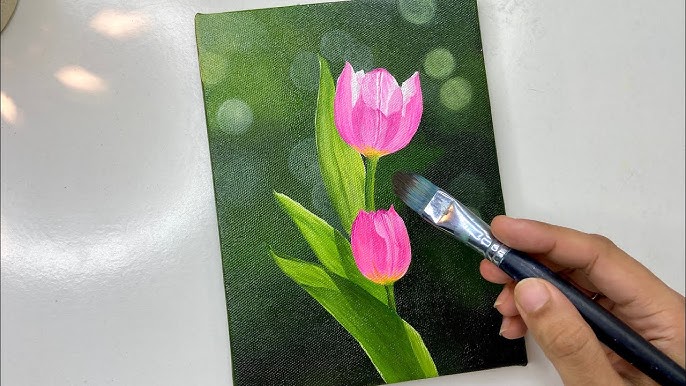Introduction: We All Start Somewhere
Let’s face it — painting flowers in oil sounds simple, but it’s surprisingly easy to mess up. Beginners (and even some experienced painters) often fall into the same traps over and over.
In this post, we’ll walk through some of the most common mistakes artists make when painting flowers, and how to fix them. Trust me, if you spot even one of these in your process, your next painting will improve a lot.
1. Jumping in Without a Plan
Yeah, we all love spontaneity. But painting without even a loose composition or color plan often ends in a muddy mess.
Quick fix: Sketch your layout lightly or do a small color study. Think about the size and placement of each bloom. Don’t wing it, unless you want to repaint everything later.
2. Overworking the Details Too Early
One classic mistake is obsessing over petals before the basic shapes are right. You end up with a tight, stiff painting that lacks life.
Try this instead: Block in your general flower shapes with a big brush. Get the values and color temperatures roughly correct first — petals and tiny lines come last, not first.
3. Forgetting About Light Direction
If your flowers don’t seem to “pop” off the canvas, check your lighting.
Common issue: No clear light source = flat, confusing painting.
Make sure there’s a consistent light direction (top-left, side, backlit, etc.). Then build your highlights and shadows around that — it adds instant depth.
4. Using the Same Color for Every Petal
Nature is never that boring. Using the same pink or red on every single petal makes flowers look fake and repetitive.
Better approach: Add variation — warm and cool shifts, slightly different tones. Mix in some grays, blues, or purples to create realistic vibrancy.
Honestly, one flower might have five shades of yellow. Embrace that.
5. Painting Every Flower with the Same Sharpness
If all your flowers are sharp and detailed, nothing stands out. It gets busy and overwhelming.
Pro tip: Soften the background flowers, or even fade them into abstract shapes. Keep sharp edges only on your focal bloom. That’s what creates a natural sense of focus.
6. Using Too Much White
White is powerful — but it can also kill your colors if you overdo it. Many beginners add white to lighten tones, but that often leads to chalky, dull results.
Instead, lighten colors with a warm yellow or a bit of Naples yellow. Save pure white for those tiny highlights that really need to shine.
7. Ignoring the Background
The flower is the star, yes — but don’t neglect the stage it’s on.
Flat or muddy backgrounds pull the whole painting down. Too detailed, and it competes with the flower.
What works: Soft transitions, subtle contrast, and a background color that complements the flower. Not steals its spotlight.
Final Thoughts: Mistakes Are Just Lessons
Don’t be hard on yourself — every painter messes up, especially early on. The trick is spotting the patterns in your work and gradually refining your process.
Next time you’re painting flowers in oil, keep this checklist in mind. You’ll likely catch one or two of these issues before they become a problem.
And hey, with just a few tweaks, your floral work might go from “meh” to “wow.”
